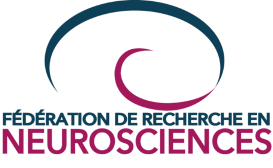events, seminars
May 13rd, 2022 – Alain Chédotal (Institut de la Vision, Paris) – Development and evolution of visual projections
In most animal species including humans, commissural axons connect neurons on the left and right side of the nervous system. This communication between the two sides of the brain and spinal cord is necessary for a series of complex function,… Continue reading
events, seminars
April 22nd, 2022 – Ariel di Nardo (College de France, Paris) – OTX2 non cell autonomous activity regulates anxiety-like behavior
Our laboratory has been working for several years on the role of non-cell autonomous homeoprotein transcription factors in regulating cerebral cortex physiology. We have shown that in mice the OTX2 homeoprotein is expressed in the choroid plexus, secreted into cerebrospinal… Continue reading
events, seminars
April 1st , 2022 – Markus Heilig (Linköping University, Sweden) – Neurobiological mechanisms of individual vulnerability to alcohol addiction-like behaviors
Neurobiological research on alcohol addiction had grown, but no mechanistically novel medications have been approved in more than 15 years. Promising candidates have failed in development. What have we been missing?
Three themes have emerged from our attempts to address… Continue reading
events, seminars
December 3rd, 2021 – Glenn Dallerac (Paris-Saclay Institute of Neurosciences NeuroPSI ) – Astrocytes close the critical period for visual plasticity
Brain postnatal development is characterized by critical periods of experience-dependent remodeling. Termination of this period of intense plasticity is associated with settling of neuronal circuits, allowing for efficient information processing. Failure to end critical periods thus results in neurodevelopmental disorders.… Continue reading
events, seminars
November 26th, 2021 – Michael Zugaro (Collège de France) – Hippocampo-cortical dynamics underlying memory formation and consolidation
The hippocampus is a limbic structure that plays a critical role in the formation, consolidation and recall of various forms of memory, including episodic and spatial memory. How do such complex cognitive functions emerge from the activity of hippocampal neurons… Continue reading
events, seminars
November 5th, 2021 – Brice Bathellier (Institut de l’Audition, Paris) – Distinctive computational features of a sensory cortex and their role in perception
The cortex is modern invention of the mammalian brain and a major focus of modern neuroscience. Yet, its role in important functions such as sensory perception has been challenged by numerous cortical inactivation experiments resulting in a lack of effect… Continue reading
events, seminars
October 29th, 2021 – Daniel Schulz (Neuro-PSI, Paris-Saclay University ) – Studying tactile feature encoding in the somatosensory cortex for optimizing a closed-loop brain-machine interface in mice
Tactile information is acquired and processed in the brain through concerted interactions between movement and sensation. We study neuronal processes responsible for the coding of sensorimotor information in the barrel cortex of rodents by using a comprehensive approach including electrophysiological,… Continue reading
events, seminars
October 22nd, 2021 – Anita Lüthi (University of Lausanne, Switzerland) – When the locus coeruleus speaks up in sleep: advancing the neurobiology of sensory vigilance
There is no doubt that sleep is quite the opposite of wakefulness. Behaviorally, meaningful interactions with the environment are suppressed; neurobiologically, wake-promoting brain areas are silent. However, since decades we know that at least some wake-promoting areas continue to discharge action potentials… Continue reading
events, seminars
October 15th, 2021 – German Sumbre (ENS, Paris) – Principles of functional circuit connectivity: Insights from the zebrafish optic tectum
Spontaneous neuronal activity in sensory brain regions is spatiotemporally structured, suggesting that this ongoing activity may have a functional role. Nevertheless, the neuronal interactions underlying these spontaneous activity patterns, and their biological relevance, remain elusive. We addressed these questions using… Continue reading
events, seminars
October 8th, 2021 – Laurent Venance (Collège de France, Paris) – Striatal synaptic plasticity and procedural learning
Our main interest is how neural networks of the brain support its cognitive capacities. We are focusing on the procedural learning, i.e. the acquisition of skills through repeated performance and practice of a behavior in response to external cues. Cortex/thamus-basal… Continue reading


